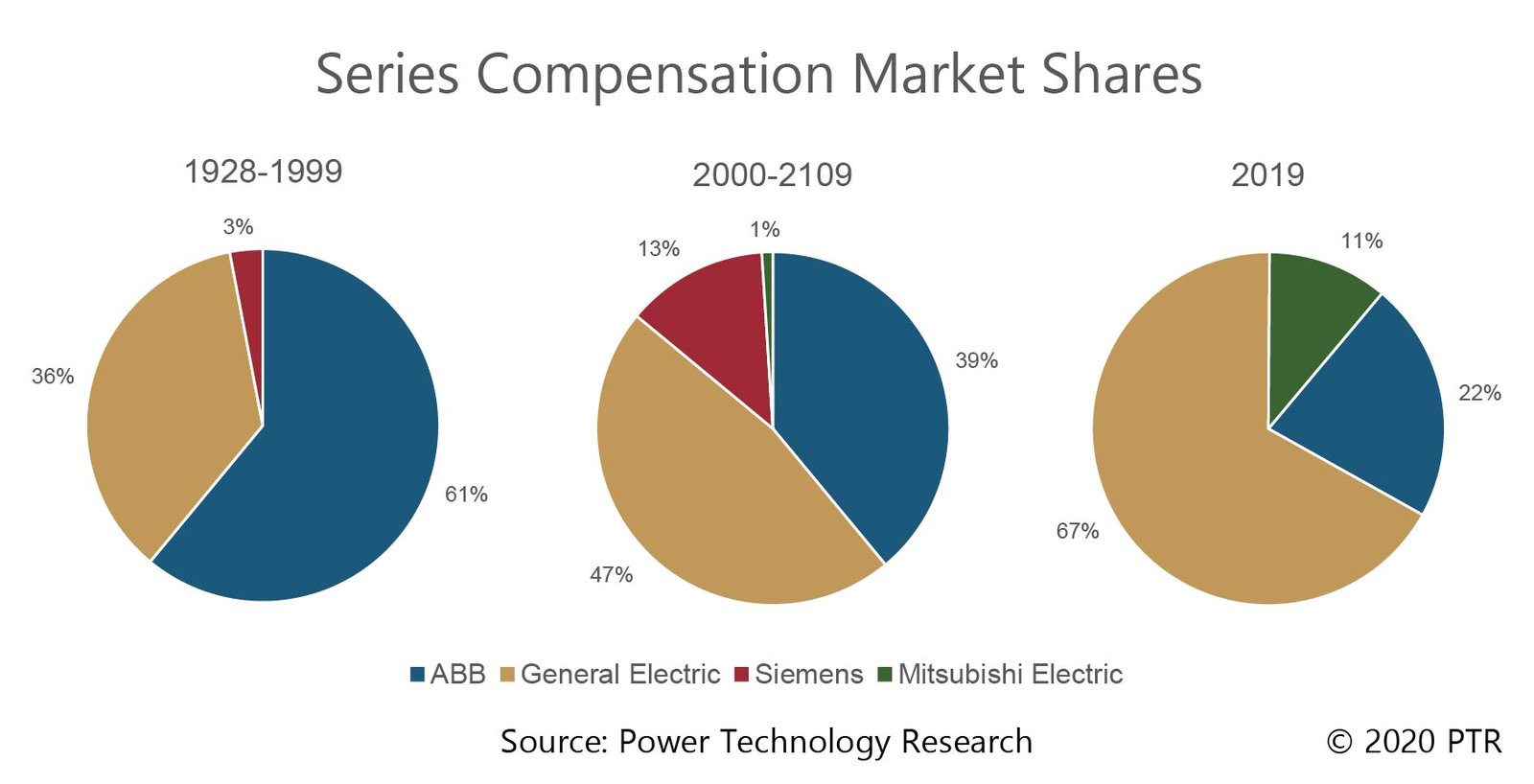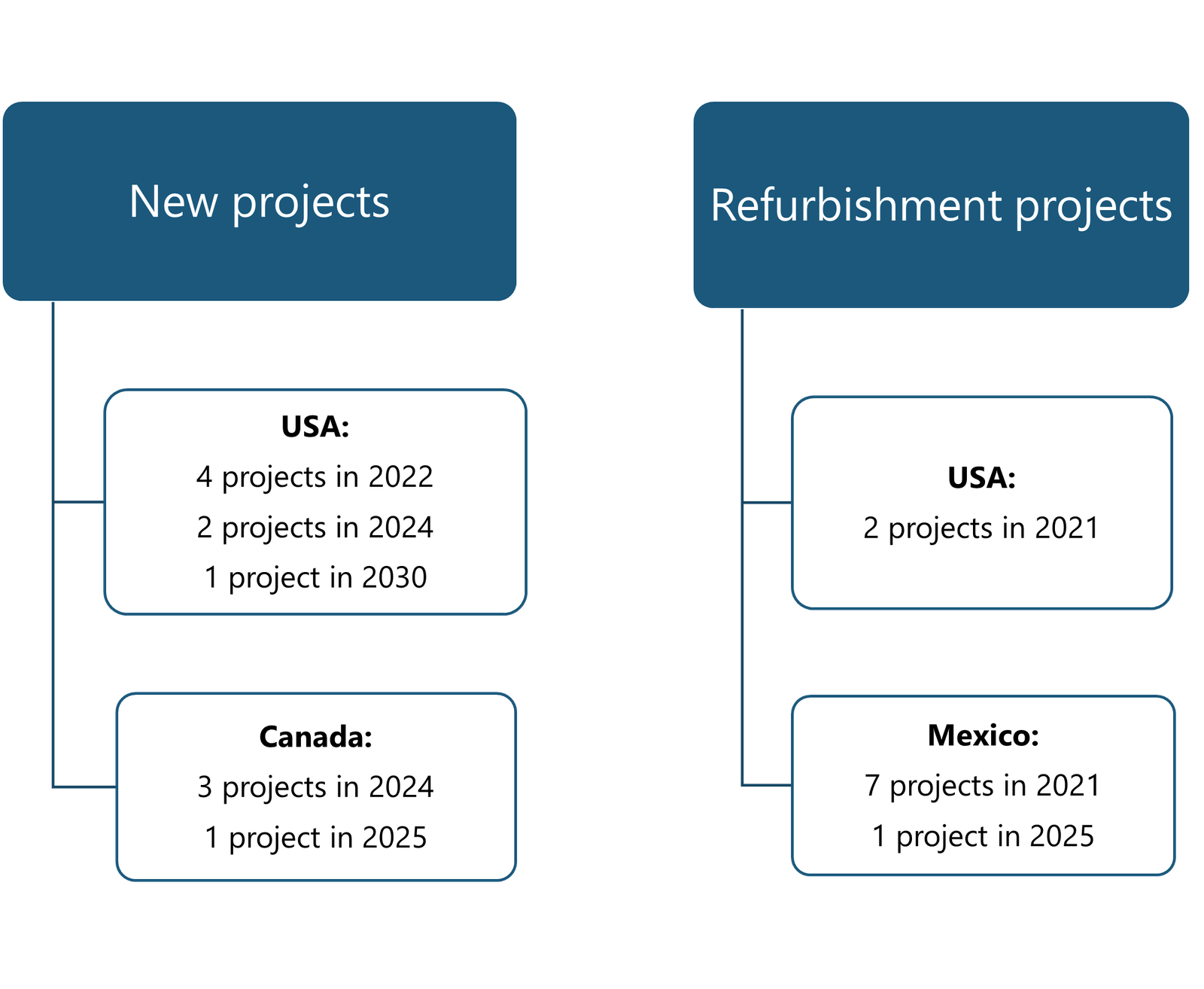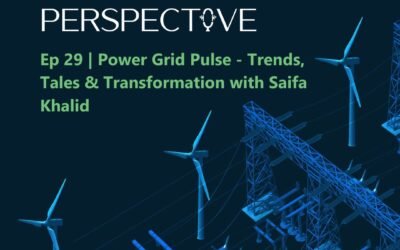As the electricity market continues to grow, the transmission system is becoming complex. With the evolution of different types of power generation sources and the rapidly changing energy mix, transmission system requirements are expected to grow. While transmission utilities are looking forward to invest in new transmission setup, there is a need to optimize the use of the existing transmission infrastructure to deal with high electrical powers. The high voltage transmission lines’ transfer capabilities are usually set voltage and stability limits, and these are affected by the circuit properties of the transmission system.
To adjust the properties of the transmission system circuit, the best solution is installing a series compensation system. Series compensation consists of capacitors connected in series with the transmission line at suitable locations. Installing a capacitive reactance in series with a long transmission line has many benefits. It reduces the angular deviation and voltage drop, thereby increasing the load ability and stability of the line. In addition, the placement of series capacitors can often increase transmission transfer limits by a factor of two or three and can be deployed in 12 to 18 months, which makes them an increasingly cost-effective solution.
After the enactment of the Energy Policy Act (2005) following the changes in the transmission infrastructure side and the energy industry, the Federal Energy Regulatory Commission (FERC) has been offering incentives to adjust with the changes. As per Energy Central’s report, FERC has focused on transmission incentives that are beneficial to consumers. For projects with benefit-to-cost ratios in the top 25 percent of projects examined over a sample period, FERC has proposed a 50-basis point adder.
Market Split according to timelines
The North American region is defined to include the USA, Canada and Mexico. The increasing electricity demand and new energy mix (consisting of different fuel sources, and renewable energy) made North America a major demand center for series compensation. The market can be divided into two timelines 1928-1999 and 2000-2019 depending upon the shift in key suppliers and end consumers. The main key suppliers in the North American region are GE, Hitachi ABB Power Grids (ABB), Siemens and Mitsubishi Electric (MELCO). Figure 1 shows the market shares of each of the key suppliers during each timeline.

Figure 1: PTR Series Compensation Market shares during different timelines
As seen in Fig. 1, ABB and GE accounted for a large part of the market from 1928 until 1999, but in 2000, Mitsubishi Electric entered the market and by 2019 has captured 11% of the market shares. More information regarding the key suppliers is as follows:
- GE: GE built the first ever series capacitor system at Ballston Spa, NY in 1928. It is one of the key suppliers of series compensation system with a track record of more than 200 systems globally. GE has been successful in introducing series compensation systems around the world and especially in North America.
- Hitachi ABB Power Grids: According to ABB, it has developed and installed series compensation systems with the same type of protection circuits as GE. In addition to that, ABB has also focused on Thyristor controlled Series Compensation (TCSC). TCSC has two main features. Firstly, it can provide variable capacitive reactance by carrying out electromechanical damping. Secondly, it will change its impedance for different sub synchronous frequencies such that the resonance is avoided. By using control algorithms, the thyristor circuit will function as a variable capacitor at fundamental frequency and virtual inductor at sub synchronous frequencies. ABB has specialized in TCSC and has supplied the most series compensation systems in North America as compared to its competitors. For example, Hydro One (the largest electricity transmission and distribution company in the province of Ontario, Canada), is operating two series capacitors supplied by ABB in their 500 kV transmission grid in Ontario, Canada. Each series capacitor is rated at 750 Mvar [3].
- Siemens: Siemens holds third rank when it comes to series compensation market in North America from 2000-2019.Siemens’ share dropped to zero in 2019 because it failed to win any series compensation related orders in North America. The products are still offered, and the production line is still in place although their focus has shifted from Series Compensation to STATCOM. Siemens’ portfolio includes three variations of series compensation; Fixed Series Capacitor (FSC), Thyristor Protected Series Capacitor (TPSC) and Thyristor Controlled Series Capacitor (TCSC). FSC works by attaching a capacitor bank in series with the transmission line to partially compensate the inductive reactance in addition to increasing the voltage at the point of connection. FSC requires protection circuits such as Metal Oxide Varistors (MOVs) and spark gaps which are not needed in TPSC. In TPSC, in case of a fault, the thyristors bypass the capacitors within a small amount of time, typically milliseconds. This eliminates the cool down time after a fault which happens because of the use of MOVs and spark gaps. Moreover, in TCSC, impedance control within a designed control window is possible whereas in FSC, only one step is required to change the line impedance.
- Mitsubishi Electric: It has also been apparent in the market in 2019 as shown in Figure 1. MELCO holds 11% of the North America market. According to Mitsubishi Electric, the FSC System is characterized as both product and service and client designs will be achieved in 15 to 18 months. The first project, titled “Jacinto” assigned to Mitsubishi Electric, in United States, was in 2019 with Entergy as the client.
New players in North American market
In the recent years, new players have been seeking opportunities in North American market to earn their market share. A couple of them have been somewhat successful in establishing their small footprint there. For instance, NR Electric was given the project by Hydro Quebec to upgrade three 735kV FSC (Fixed Series Compensators) at the Chibougamau Substation in 2016 and in 2018, the project was successfully completed and operational. These series compensation systems were initially installed in 1990s in Chibougamau Substation and there was a need of replacement of the protection system along with some spare parts. NR Electric’s series compensation system consisted of components such as capacitor bank, MOV, spark gap, damping circuit, bypass circuit breaker and control and protection system. All of these components fulfilled the Quebec electricity and technical requirements of series compensation and hence the upgraded project was a success
Recent policies
However, in May of 2020, an executive order was issued by the government of the United States that was intended to protect America’s bulk power system against foreign threats. The executive order prohibited Federal agencies and U.S persons from acquiring, transferring or installing any equipment in which any foreign party has been involved. Not only does the order target the procurement of new equipment from any foreign national but also the existing equipment in use has to be reported. The report of the existing equipment in use will enable the government to carry out appropriate measures to isolate and replace the equipment as appropriate [9]. Considering the fact that Bulk Power System (BPS) is crucial in the integrated electricity system and that foreign suppliers have a higher market share in supplying BPS equipment, this order can have a negative impact on the electricity system. It will impact the upgrades and installation of series compensated systems by foreign parties in the United States. This order will also affect the sales for foreign suppliers.
Key suppliers’ recent developments in North America
The active key suppliers have been working on strengthening their presence in North America. For example,
- In 2016, GE’s new capacitor and instrument transformer advanced manufacturing facility in Clearwater, Florida became operational. GE invested $60 million in the 190,000 square foot facility which produces transformers and capacitors for the global market.
Recently, GE completed a project for the Bonneville Power Administration to provide reliable and efficient power across the 500kV California- Oregon intertie. This was needed to provide interconnection capacity for new large load addition requests in the Central Oregon load area. The project was completed in 2019 and involved adding a 14 ohm series capacitor at the Slatt substation in series with a 500 kV line and resizing the existing series capacitors at Bakeoven substation 500 kV lines from 25 ohms to 21.25 ohms.
Also GE has won several recent projects including the LS Power DesertLink, where a 500kV FSC bank will be installed to increase the capacity of the a new transmission line into California, and the AEP Kanawha River Project in West Virginia, where a 345 kV series capacitor will be used to help maintain reliability.
- ABB is also expanding its electrification business in the United States to ensure smart and reliable electricity distribution and also to meet the increasing demand of the medium voltage products. According to a report by ABB, one of the recent projects in the United States is the Marcy South Series Compensation project completed in 2016. The project which began in late 2015, replaced 22 miles of conductors and ABB supplied three capacitor banks.
- Siemens has also carried out work on Static Var Compensators (SVCs). SVCs are devices that use thyristors to switch capacitors and control reactors. By doing this, SVCs allow efficient and rapid control of reactive power. Siemens installed two SVCs to increase the stability of the transmission system in Hydro Quebec, Canada. They also installed noise absorbers since the substation is close to residential areas. Other than that, Siemens was provided with the project of the Holtsville Hybrid STATCOM (Static synchronous compensator) by the Long Island Power Authority in USA. STATCOM has the same purpose as SVCs but they employ a different technical principle.
Future Projects
The companies mentioned previously have been working to strengthen their market in North America. There are many future projects that lead to the increase in future demand of series compensation systems in North America but those have been assigned to different companies. The projects are either refurbishments of the original systems or installation of a new system. The flow chart in Figure 2 gives insights on the future projects:

Figure 2: Future Projects in North American market
With the increasing power demand, the need for efficient transmission of high powers is increasing which is leading to the insurance of safety and reliability of power transmission. In the future, the companies will modify their transmission incentives according to the changing transmission demand to ensure safety and more transmission lines will be backed up by series compensated systems. As transmission systems increase in complexity, utilities will look at cost effective solutions to increase power transfer with installing series compensation systems. With many projects slatted for the near future, companies that offer these options are sure to gain.
Recent Insights
Ep 29 | Power Grid Pulse – Trends, Tales & Transformation with Saifa Khalid
Overview: In this episode of PTR Perspective, Saqib Saeed sits down with Saifa Khalid, Senior Manager leading PTR’s Power Grid research practice, to discuss the evolving landscape of grid technologies and market research. With nearly a decade of experience shaping...
Ep 28 | Powering the Future: Innovations & Challenges in Mobility
Overview: In this special PTR Perspective episode recorded live at CWIEME Berlin 2025, Saqib Saeed, Chief Product Officer at PTR Inc., sits down with two leading experts in the mobility space—Milosavljevic Misa, Innovation Project Leader at IFP Energies Nouvelles,...
Ep 27 | Rare Earths, Global Supply Chains, and Sustainability: Insights from Dr. Nabeel Mancheri, REIA’s Secretary General.
Overview: In this episode of Industrial Futures: Conversations from CWIEME Berlin 2025, host Saqib Saeed, Chief Product Officer at PTR Inc., sits down with Nabeel Mancheri, Founder and former Secretary General of the Global Rare Earth Industry Association (REIA) and...
Ep 26 | Next-Gen Mobility: Insights from Dr. David Hind, Drive System Design.
Overview: In this episode of Industrial Futures: Conversations from CWIEME Berlin 2025, Saqib Saeed sits down with David Hind, Principal Engineer at Drive System Design, to explore the evolving challenges and opportunities in electrified propulsion systems. With deep...



